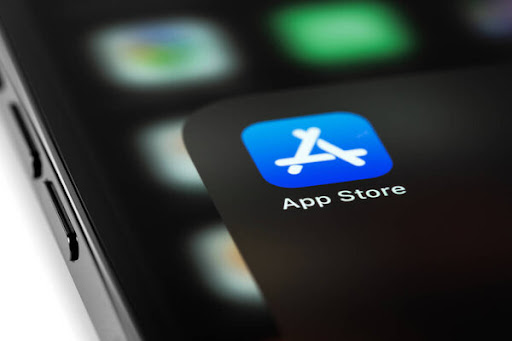
Last Updated August 1, 2024
Kevin transitioned from banking and finance to digital marketing, specialising in SEO since 2010. His experience includes improving SEO results for websites in finance, insurance, e-commerce, medical & clinics, and B2B services. Kevin thrives in remote work environments, leading a 33-member team across seven countries. He enhances productivity with streamlined processes, Google Sheets automation, no-code platforms, and AI integration. His expertise in SEO, technology, and remote team management enables him to develop training programs that equip individuals and businesses with the skills to solve complex business challenges. Kevin's actionable learning approach ensures practical application and continuous development.
No-Code Growth Hacks: How to Increase Installs and Retain Users for Free
User retention is always a looming issue for businesses and teams planning to launch into an online market. Planning, designing, and building any no-code product takes time and effort. Whether it’s a mobile application, a website or wide-scale software, the product’s success doesn’t rely on the launch alone. The most crucial aspect is what comes after the launching period.
According to Ceci, “In March 2020, the total sessions on mobile apps worldwide spiked at eight percent, while retention after 30 days from the first install recorded its lowest rate in the examined period. Due to the global outbreak of coronavirus pandemic, engagement with mobile apps skyrocketed in 2020. However, the share of users who opened the app after 30 days from the first install decreased.”
The numbers are pretty ironic, considering we all live in times where people have more time and freedom to use devices like smartphones. Nevertheless, statistics show a decline in mobile phone users using newly downloaded applications. The issue perhaps lies in the strategies of the developer teams and businesses and not the user base availability.
Let’s put the issue in numbers: while conversion to installation rates go as high as 30%, the retention rates falter rapidly, especially after the first thirty days. For a country-per-country comparison in 2020, Finland has the highest retention rate at 6%; Japan comes close at 5.89%, while Ireland falls in third place with 5.78% (Ceci, 2022).
Let the guide aid all no-code developers and businesses planning to grow and maintain products from no-code platforms. Here are some tips and methods to increase the number of installations and retain users afterwards:
Build a flawless no-code product

The first, most important thing that all developers should do to retain users is always to build a solid product. We’ve all encountered buggy applications that present error logs all the time. Users aren’t strangers to app crashes, reboots and complete restarts. Before releasing a product, it’s best to ensure that these things are already at par with the highest consumer expectation.
According to a survey by Qualitest, “When asked how many bugs or glitches they would have to experience to abandon an app completely, across all age ranges and genders only 12% of respondents answered that they would not abandon an app based on bugs. From the 88% of respondents that would abandon, 51% of them indicated that they would abandon an app completely if they experienced one or more bugs per day.”
Though it’s impossible to get a perfect application, the foundation of any solid user base is a good, working product that rarely poses technical issues to its users. One tip is that imagine you are presenting the application to a group of investors to strengthen funding for more app developments. Putting the best foot forward for any app during its launch increases retention rates after installation.
With this info, groups and developers should focus a lot on the planning stages of the product. Workflows and systems should be well thought out. The best developers think ahead and predict future patterns emerging from a current user base.
How to build a good no-code product
- Invest in a no-code development platform that provides all the functions, including development and marketing, of the product you want to create
- Contact and consult with the platform to ensure that you pay for the right subscription plan that matches all your needs
- Maximise the use of the platform and all its products that are part of the plan
- Improve the app over time by taking into the account user experience of users (both prior and current) while using the no-code application
Encourage users to leave ratings and reviews

When users constantly use the products, it presents many opportunities to build a strategy for app retention. One way to increase the installations and retain potential users is by building the impression of the products. These things come in the form of product ratings and reviews.
Integrate popups in the app to ask for a rating and review. For example, many products in the Apple App Store popup a message asking for ratings before logouts. The reviews and ratings of these apps are present and visible on the app page. Current visitors of the App Store can then decide if they will download the app based on the reviews. The more 5-star ratings and stellar reviews there are, the better the app impressions will be.
“As of February 2022, the highest-ranking mobile apps on the results page of the Google Play Store had an average of 267 thousand reviews and an average rating of 3.94 stars. mobile gaming apps had the highest rating among all examined app categories, with an average of 961 thousand reviews. By comparison, food and drink apps had the lowest number of reviews, and an average rating of 3.74 stars among Android customers.” (Ceci, 2022)
The reviews and ratings are some of the most trusted ways that potential users can gauge the product. Moreover, circling back to the first tip, reviews will likely be better for products with a solid foundation and proper function.
How to increase installs with reviews and ratings
- Not all reviews will lead to great impressions, so it may be helpful to entice users to leave positive reviews with rewards, prizes and in-app benefits
- Leave compelling messages in the product, such as “If you like using our application, leave a review and rating!”
- Allow seamless ratings and reviews inside the app, website or software, and minimise the necessity to log in to other platforms or accounts
- Do a follow-up of the review or rating by asking the user directly through other methods like personally sending an email to the user
Integrate third-party apps to monitor the no-code product activities

No-code platforms are great avenues for finding other applications on the web. One no-code platform Zapier has access to around 5000 other applications outside the platform. When building and designing the product, integrate the most valuable tools to track the usage and activities in the app.
Because developers don’t have the time to monitor numbers, the other apps can perform such functions for the no-code product. Other external applications provide products for implementing the marketing strategies instead of monitoring them.
For example, MailChimp is a veteran email marketing platform that has adapted through the years. Many no-code platforms now have integrations with MailChimp to help developers with email marketing.
While businesses have these other external apps running, the focus now falls on improving the application itself. Human resources are currently focused on the app and creating marketing and product development strategies instead of keeping tabs on the numbers. Outsourcing the other parts of the processes to external apps streamlines the work and effort of teams in the product development process.
Other no-code tools that have vast external app integrations
- Caspio – a platform that has extensions for multi-step forms and star rating options
- Appy Pie – a no-code development platform integrations for UserEngage, which streamlines marketing automation to funnel and increase conversions
- Zoho Creator – a platform with integrations for electronic wallets like PayPal, which works well with retail applications
- Studio Creatio – a no-code development studio with connectors to big no-code e-commerce platforms like Shopify to scale shopping app developments
- AppSheet – a no-code app developer has connectors to Verified Reviews to trigger the app each time a user creates a review
How to let third-party apps maximise work
- Know all the features of each third-party app, you never know if there are options to streamline more processes like using push notifications and enabling automatic messaging
- Choose no-code platforms that provide solutions for workflow automation and app development, and design
- Schedule a regular audit of the entire system from front-end to back-end to look for points of improvement in the product
- Focus on the app shifts when other things are going on, so keep integrating more extensions, connectors or APIs as fit to the needs of streamlining the product processes
Apply App Store Optimisation

App Store Optimisation or ASO is the process of optimising the app page in any store platform. The goal for each ASO strategy is to rank the app first so that users who visit the store platform can see the app ranking first in the list of search results. This is very helpful for applications, especially newly launched on various platforms.
The App Store platform ranks all apps based on keywords, reviews, impressions and descriptions. ASO is the Search Engine Optimisation for Apple App Store, Google Play, and other store platforms. Depending on how solid the ASO strategies are for each app, there will be more downloads and higher chances of increased retention rates.
AppTweak’s 2020 data for Page View to Installation rate is comparable. For the US App Store, the rate was 33.7%; for Google Play, the rate was 26.4 (Dogtiev, 2022). Users who view or land on a web page or platform will first see the app page. App pages are only visible when they rank high enough on the list. For new apps with unoptimised pages, the app is less likely to become part of the results the user is searching.
Tips for applying effective ASO
- Always do keyword research and integrate these keywords in the description and information text about the application
- Establish a good brand name by creating an app title on the store platform, e.g., “LinkedIn: Job Search & News”
- Create a remarkable app icon to display on the platforms
- Add a video introduction or preview app on the app page
Use Social Media Platforms for the promotion

The surge of social media platforms has shifted how businesses and industries work. As such, all enterprises shouldn’t miss out on using social media to hasten marketing efforts. The statistics on social media usage are very telling. Companies now use these platforms to gain more installations and higher retention rates.
According to Saleh in his article, “… it costs five times as much to attract a new customer, than to keep an existing one? The first rule of any business is to retain customers and build a loyal relationship with them, and thereby avoid customer acquisition costs.”
The cost of acquiring new customers is more expensive than retaining current users. It’s a signal for many developer teams to focus on personal approaches that are more available and accessible on social media platforms. Even if the platforms are virtual, it doesn’t mean businesses are entirely out of touch with people using the app.
Simple engagements such as asking polls, responding to DMs and posting about the customers online boost install rates, and even more crucially, retention rates. Big companies have huge teams to handle social media accounts. Nevertheless, using these platforms doesn’t need to be grand initially. Developers can create an account for the app in progress and post anything about it.
How to optimise social media platforms
- Find the right platform the users are primarily using and use that platform for regular app updates
- Interact with the people on the platforms, i.e., responding to comments properly, reacting to the audience, posting engaging content such as questions, surveys, etc.
- Apply SEO strategies to the content to ensure they target the right content searches, i.e., using keywords, hashtags, etc.
- Post content regularly to the platforms to ensure that the audience gets the latest updates or happenings about the developed application
Conclusion: How to increase the number of installations and maintain a high retention rate?
Building a website or an application is one thing. Gaining a consistent user base is another thing. Maintaining a constant group of users will always be half of the battle for pushing any project further. It’s always crucial to get the necessary support from people using no-code products.
Are people actually using what you made? Do your users find the correct value in using what you offer? What can you do to improve your offering?
There are many ways to increase the number of installs in the app. The retention rate follows afterwards when developers do the right things to make the no-code products developer teams create. There isn’t one perfect guide or strategy to maintain a user base, but if you are currently developing a product using no-code platforms, you can start with the app in the works and work your way up there.
Kevin Dam
Kevin transitioned from banking and finance to digital marketing, specialising in SEO since 2010. His experience includes improving SEO results for websites in finance, insurance, e-commerce, medical & clinics, and B2B services. Kevin thrives in remote work environments, leading a 33-member team across seven countries. He enhances productivity with streamlined processes, Google Sheets automation, no-code platforms, and AI integration. His expertise in SEO, technology, and remote team management enables him to develop training programs that equip individuals and businesses with the skills to solve complex business challenges. Kevin's actionable learning approach ensures practical application and continuous development.
